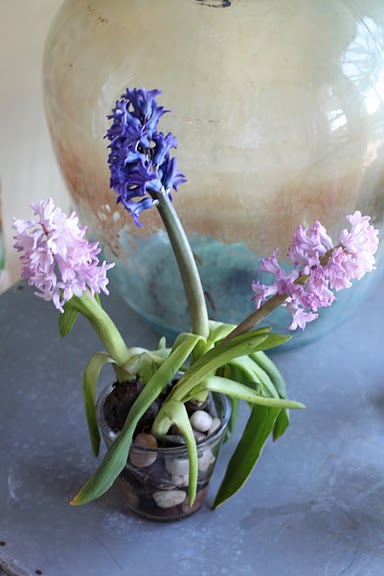As with the season of Lent itself – a wintry season of contemplation, spiritual focus, and petition - these symbols of new life out of the deathlike state of winter are emblems of the newness of spring, rebirth, and rejuvenation.

Helleborus is the genus name for Lenten Roses to which these perennials are often referred as Hellebores. Hellebores range from garnet to ruby, lilac to lavender, and to the purest white. Once the flowers begin to fade, the petals become chartreuse and lime green, lasting for months on their stems and for days in arrangements. Some of the flowers are the simplest, five petal blossoms you’ll ever see, while others are compound arrays of florets with freckles or dark nectaries complemented by bright sepals.

Leathery leaves, pretty and green, make for a delightful texture in the garden. The dark green of the Christmas Rose, Helleborus niger, is quite stunning around Christmas time and into January. The pure white flowers dangling above the glossy greenery are beautiful sentiments for the Christmas Holidays. From there, cultivars and cross species of Helleborus orientalis will begin to emerge and bloom through the winter and especially during Lent…quite an appropriate name, eh? From bloom time to color to texture, I’m sure you’ll be able to find a Hellebore to suit your garden’s fancy.
Some varieties within this genus take a few years or growing seasons to bloom – totally worth it. From their evergreen foliage, long lasting flowers, and bloom time, Hellebores should be a garden staple for gardens throughout the South as well as the country. One of the attributes I have come to admire concerning Hellebores is their season proper - they actually bloom during Lent, during the winter, starting to flower before the spireas, forsythia, and flowering trees have begun to blossom.

A plant that will naturalize, or gradually take over a garden plot, Lenten Roses are ideal under deciduous trees and shrubs and tucked into corners that may not receive the most attention on the garden stage. Along a fence line, under a tree, or popping out from the base of unsuspecting shrubs, Hellebores grow well in full winter sun and partial shade. Once their covers have leafed out and the season turns warm, these plants will benefit from the newly developed shade. Typically sold in the fall, though, Hellebores can be planted year round. I like to plant them with perennial ferns, so when the heat of summer is stressing their leaves, the new fronds are the perfect camouflage. Southern Wood ferns a good companion plant for Lenten Roses.

Of course, legends of the Lenten Rose’s history abound, whereas some scholars believed Alexander the Great was poisoned with an overdose of Hellebore ingestion – often used to treat a range of illnesses in ancient times. Russian medicinal practices even view the Hellebores as depression fighters. As with any good thing, too much can be detrimental, thus too Hellebore poisoning is possible…I doubt any of us will have issue with this…moving on.
Lenten Roses are stellar additions to any garden. Whether you have a patch of them under a tree or a clump that is slowly spreading throughout the garden, I hope you’ll enjoy your Hellebores inside as cut flowers and outside as some of the first flowers of winter and spring. The purpose of Lent is the preparation of the believer for Easter – its meaning and symbolism. What better reminders than a beautiful flowering plant during a time of reflection and concentration to recall the beauty that this season represents. “For the beauty of the earth…hill and vale and tree and flower.”






















